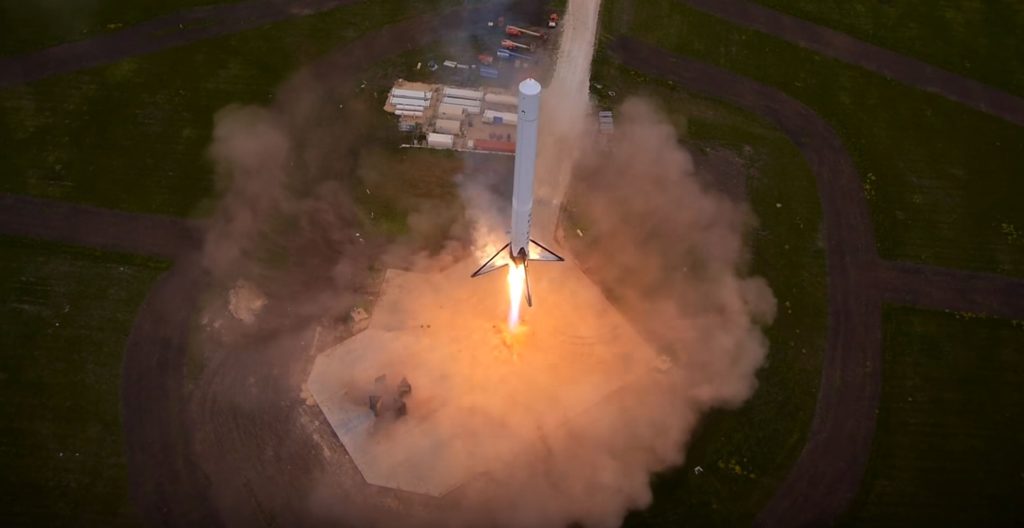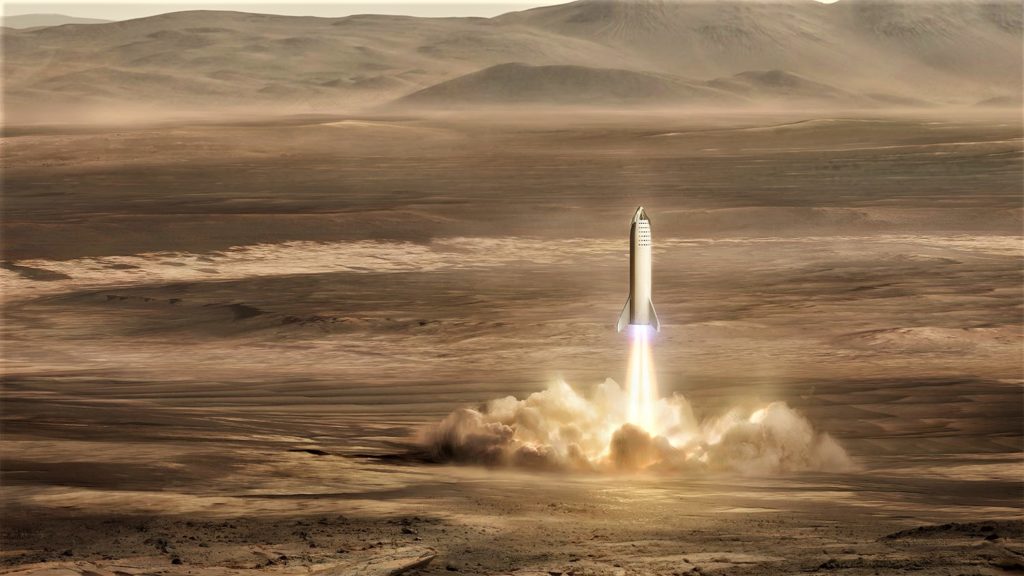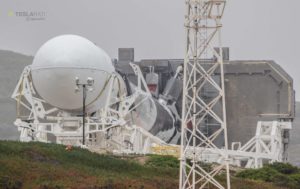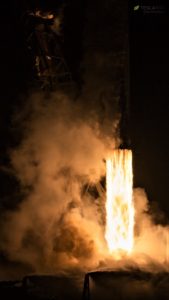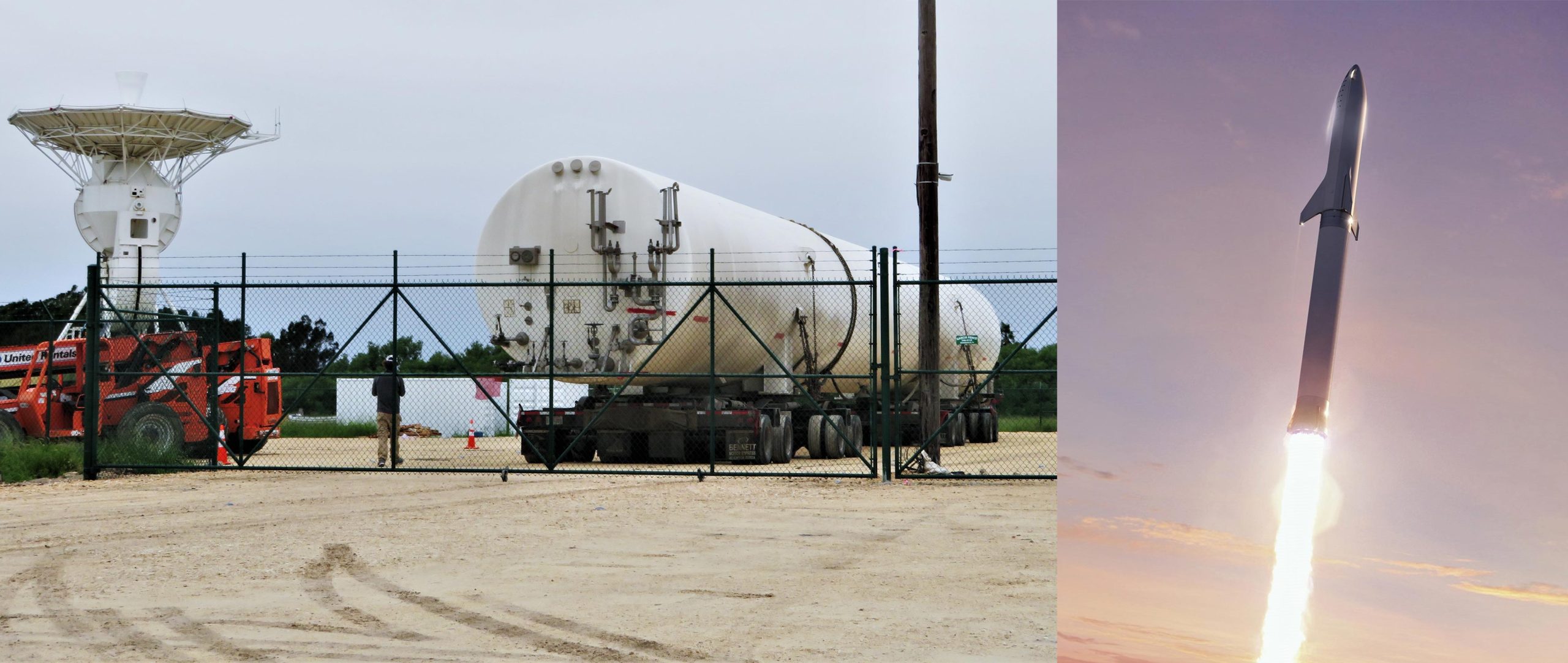
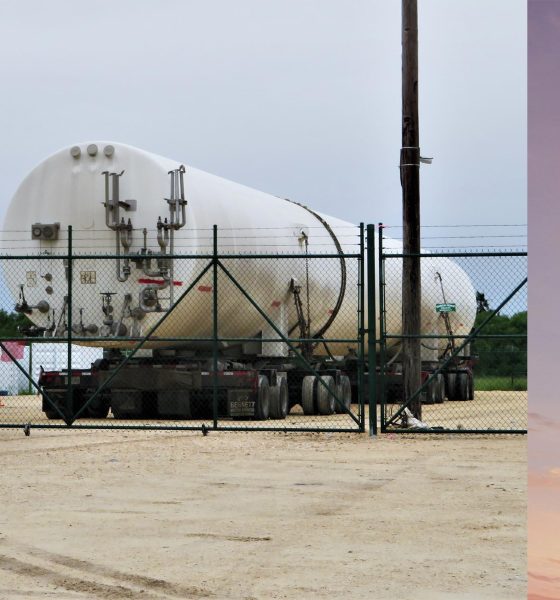
News
SpaceX ships another huge propellant tank to South Texas BFR test site
Captured by NASASpaceflight.com forum user “bocachicagal”, the second of several massive liquid methane tanks has arrived at SpaceX’s prospective Boca Chica, Texas facilities, to be dedicated to integrated testing of BFR’s spaceship/upper stage.
If there was any doubt beforehand, the arrival of a second ~100,000 gallon vacuum-insulated tank all but guarantees that SpaceX is planning a major campaign of BFR spaceship testing in South Texas – with as much as 200,000 gallons of storage capacity in those two tanks alone, SpaceX could easily top off two Falcon 9’s with liquid oxygen and still have more than 100 tons left over.
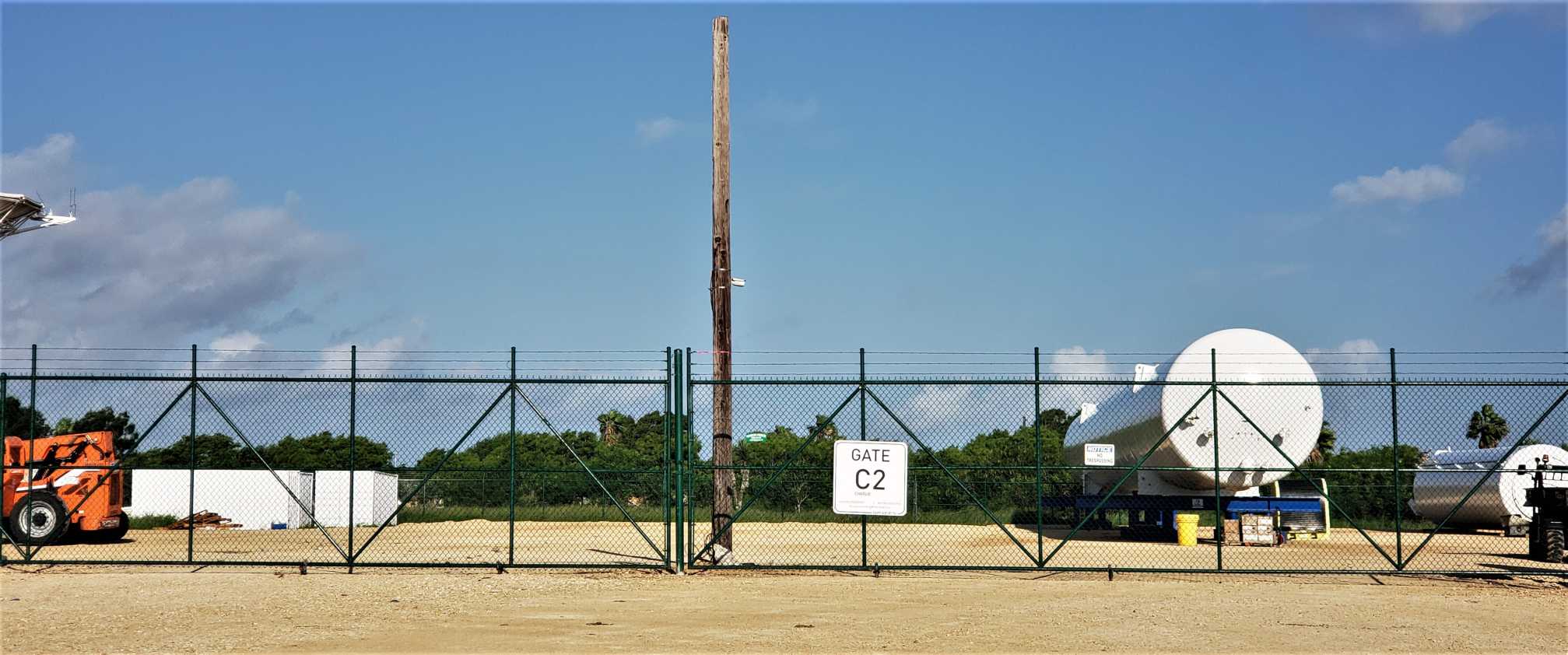
Per NASASpaceflight.com’s forums, it appears that this newest tank arrived at the site sometime yesterday or the day before. Thanks to the fundamental properties of BFR’s planned liquid methane and oxygen fuel and oxidizer, aspects of basic ground support infrastructure may actually be a significant improvement over Falcon 9’s refined kerosene (RP-1) and liquid oxygen, and dramatically superior (at least in a logistical and practical sense) to hydrogen/oxygen, a popular choice for many rockets.
In terms of volume and density, oxygen is about 2.5x denser than methane but optimally combusts at a ratio of roughly 3.5 parts oxygen to 1 part methane (3.5:1), with SpaceX likely to operate the Raptor engine closer to 3.8:1. This means that – despite their major density differences – BFR’s oxygen and methane tanks will ultimately end up very similarly sized to hold ~230t of liquid methane and ~860t of liquid oxygen (2017 BFR numbers).
Testing giant rockets: it’s not easy
As it relates to SpaceX’s South Texas propellant infrastructure, this likely means that a minimum of four large vacuum-insulated tanks will be needed to fully fuel a BFR spaceship (BFS), two for oxygen (~800t) and two for methane (~300t). Depending on how SpaceX has structured its BFR infrastructure acquisitions, the two large tanks now present in Boca Chica could be more than enough to support a wide range of spaceship hop tests. A full load of fuel is almost certainly unnecessary – if not outright implausible – for BFS hop testing: with a full load of ~1100t of fuel and the spaceship’s total mass around ~1250t, all seven planned Raptor engines would need to be installed and operating near full thrust (~1400t, 14,000 kN) to lift the ship off the ground.
- F9R seen just before liftoff for a 2014 hop test at SpaceX’s McGregor, TX test facilities. BFR’s first test pad might (or might not) look quite similar. (SpaceX)
- An updated spaceship lands on Mars. (SpaceX)
For context, Falcon 9’s first stage produces a maximum thrust of roughly 7,600 kN at liftoff, while Falcon Heavy triples that figure to ~22,800 kN. The spaceship/upper stage of BFR alone thus produces nearly two times as much thrust as an entire Falcon 9 at full throttle and as much as fourteen times as much thrust as Falcon 9 and Heavy’s upper stage, statistics that properly illustrate just how extraordinarily powerful BFR is when compared with the rockets SpaceX currently operates. BFR’s booster (BFB) is even wilder, featuring ~3.5 times as many Raptors and thus ~3.5 times as much thrust as the spaceship/upper stage.
As a result of the sheer power of just the spaceship alone, SpaceX may have to move directly to a style of launch pad closer to that used by Falcon 9 and Heavy rather than the spartan concrete slab used for Falcon 9’s Grasshopper testing. In this case, the rocket would be mounted some distance from the ground to minimize acoustic loads on the vehicle’s after and would likely include a water deluge system to further deaden thermal and acoustic energy while also minimizing damage to the concrete and metal structures that launch and landing pads are built out of.
- Prior to liftoff, Falcon 9 and Falcon Heavy are held down by massive “hold-down clamps” at the rocket’s base. Even after engine ignition, those clamps only release once the flight computer decides that the rocket is healthy. (Pauline Acalin)
- Falcon 9 B1049 lifts off from SpaceX’s LC-40 pad on September 10, producing more than 1.7 million pounds of thrust.(Tom Cross)
- A September 2018 render of Starship (then BFS) shows one of the vehicle’s two hinged wings/fins/legs. (SpaceX)
- BFR’s booster is at least three times more powerful still than BFS at liftoff. (SpaceX)
Above all else, the presence of not one but two huge ~100,000-gallon vacuum-insulated tanks at SpaceX’s Boca Chica facilities all but guarantees that the company intends to situate a serious campaign of BFR tests there, likely including the integrated spaceship hop tests both Elon Musk and Gwynne Shotwell have explicitly mentioned in recent months. Put simply, SpaceX has no other reason to be bringing massive cryogenic propellant tanks to South Texas – the company has plenty of space at any one of its three large launch complexes (not to mention McGregor) if it wanted to store those tanks elsewhere, and those three facilities already have operational propellant storage and loading infrastructure for Falcon 9 and Heavy launches.
If more massive tanks continue to arrive or if it becomes clear that the two similar tanks present or solely meant for LOX or methane, the scale of SpaceX’s intentions in South Texas will become increasingly clearer.
For prompt updates, on-the-ground perspectives, and unique glimpses of SpaceX’s rocket recovery fleet check out our brand new LaunchPad and LandingZone newsletters!

News
Tesla FSD fleet is nearing 7 billion total miles, including 2.5 billion city miles
As can be seen on Tesla’s official FSD webpage, vehicles equipped with the system have now navigated over 6.99 billion miles.
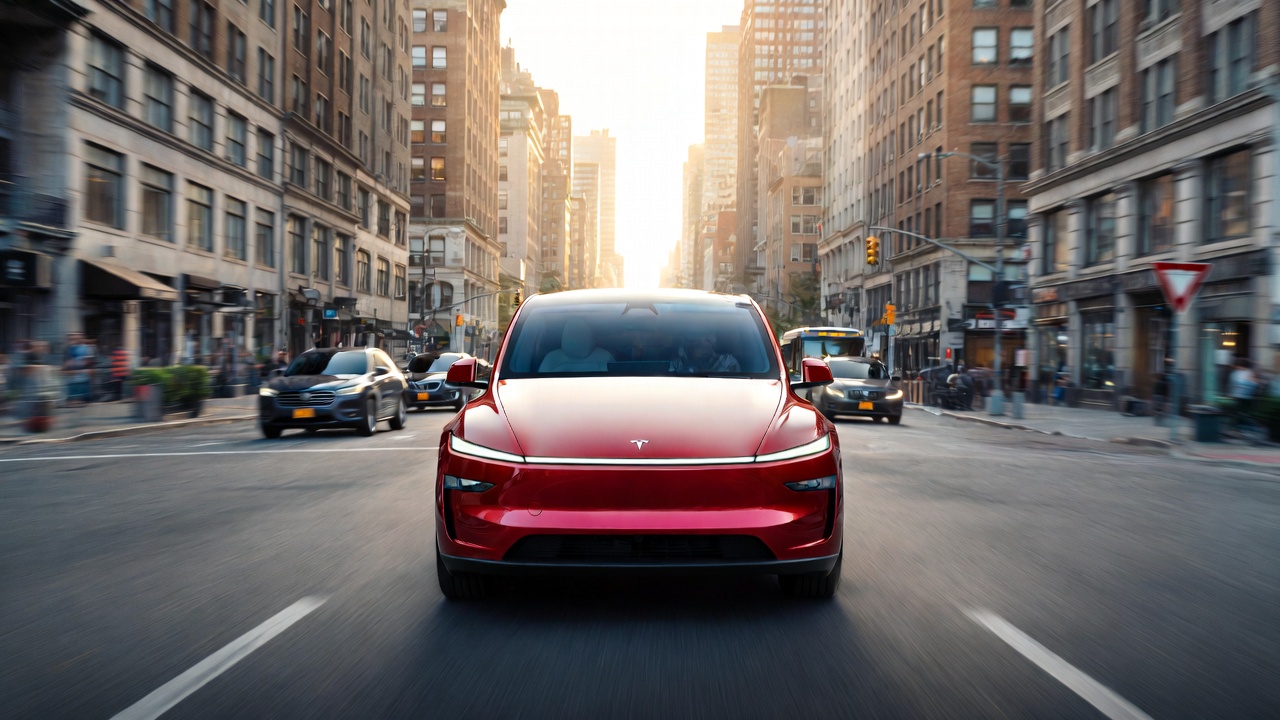
Tesla’s Full Self-Driving (Supervised) fleet is closing in on almost 7 billion total miles driven, as per data posted by the company on its official FSD webpage.
These figures hint at the massive scale of data fueling Tesla’s rapid FSD improvements, which have been quite notable as of late.
FSD mileage milestones
As can be seen on Tesla’s official FSD webpage, vehicles equipped with the system have now navigated over 6.99 billion miles. Tesla owner and avid FSD tester Whole Mars Catalog also shared a screenshot indicating that from the nearly 7 billion miles traveled by the FSD fleet, more than 2.5 billion miles were driven inside cities.
City miles are particularly valuable for complex urban scenarios like unprotected turns, pedestrian interactions, and traffic lights. This is also the difference-maker for FSD, as only complex solutions, such as Waymo’s self-driving taxis, operate similarly on inner-city streets. And even then, incidents such as the San Francisco blackouts have proven challenging for sensor-rich vehicles like Waymos.
Tesla’s data edge
Tesla has a number of advantages in the autonomous vehicle sector, one of which is the size of its fleet and the number of vehicles training FSD on real-world roads. Tesla’s nearly 7 billion FSD miles then allow the company to roll out updates that make its vehicles behave like they are being driven by experienced drivers, even if they are operating on their own.
So notable are Tesla’s improvements to FSD that NVIDIA Director of Robotics Jim Fan, after experiencing FSD v14, noted that the system is the first AI that passes what he described as a “Physical Turing Test.”
“Despite knowing exactly how robot learning works, I still find it magical watching the steering wheel turn by itself. First it feels surreal, next it becomes routine. Then, like the smartphone, taking it away actively hurts. This is how humanity gets rewired and glued to god-like technologies,” Fan wrote in a post on X.
News
Tesla starts showing how FSD will change lives in Europe
Local officials tested the system on narrow country roads and were impressed by FSD’s smooth, human-like driving, with some calling the service a game-changer for everyday life in areas that are far from urban centers.
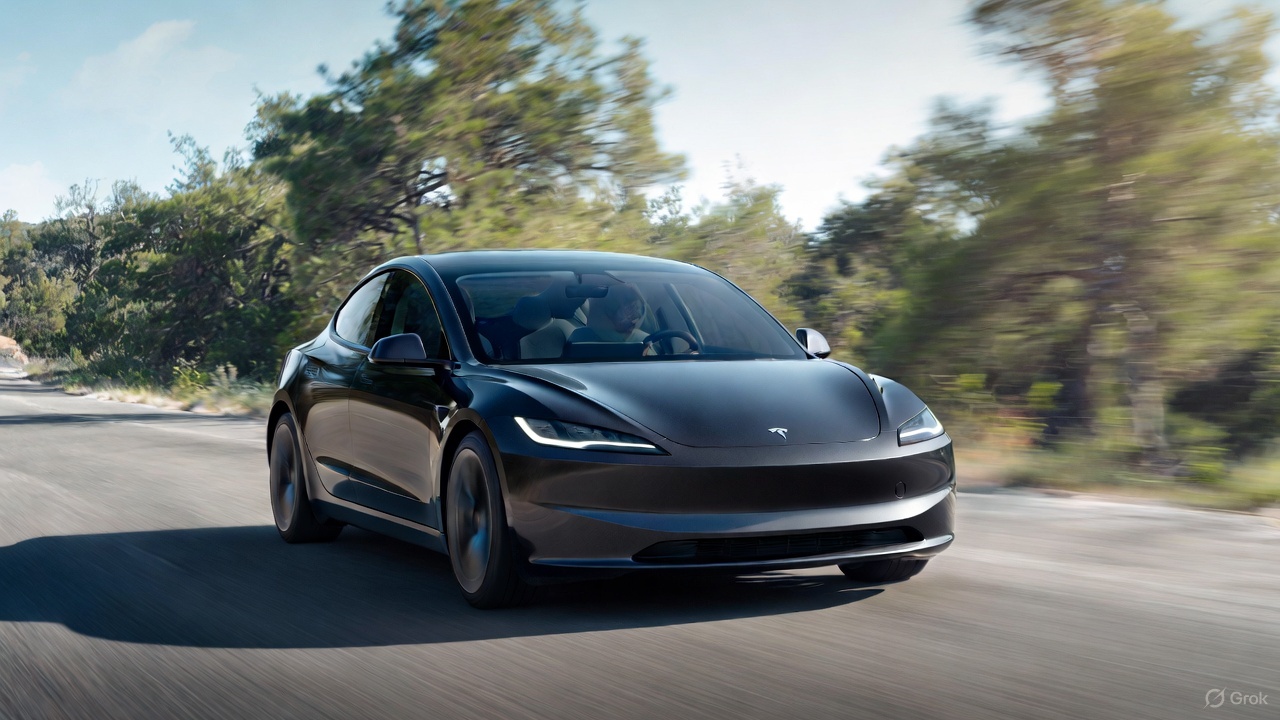
Tesla has launched Europe’s first public shuttle service using Full Self-Driving (Supervised) in the rural Eifelkreis Bitburg-Prüm region of Germany, demonstrating how the technology can restore independence and mobility for people who struggle with limited transport options.
Local officials tested the system on narrow country roads and were impressed by FSD’s smooth, human-like driving, with some calling the service a game-changer for everyday life in areas that are far from urban centers.
Officials see real impact on rural residents
Arzfeld Mayor Johannes Kuhl and District Administrator Andreas Kruppert personally tested the Tesla shuttle service. This allowed them to see just how well FSD navigated winding lanes and rural roads confidently. Kruppert said, “Autonomous driving sounds like science fiction to many, but we simply see here that it works totally well in rural regions too.” Kuhl, for his part, also noted that FSD “feels like a very experienced driver.”
The pilot complements the area’s “Citizen Bus” program, which provides on-demand rides for elderly residents who can no longer drive themselves. Tesla Europe shared a video of a demonstration of the service, highlighting how FSD gives people their freedom back, even in places where public transport is not as prevalent.
What the Ministry for Economic Affairs and Transport says
Rhineland-Palatinate’s Minister Daniela Schmitt supported the project, praising the collaboration that made this “first of its kind in Europe” possible. As per the ministry, the rural rollout for the service shows FSD’s potential beyond major cities, and it delivers tangible benefits like grocery runs, doctor visits, and social connections for isolated residents.
“Reliable and flexible mobility is especially vital in rural areas. With the launch of a shuttle service using self-driving vehicles (FSD supervised) by Tesla in the Eifelkreis Bitburg-Prüm, an innovative pilot project is now getting underway that complements local community bus services. It is the first project of its kind in Europe.
“The result is a real gain for rural mobility: greater accessibility, more flexibility and tangible benefits for everyday life. A strong signal for innovation, cooperation and future-oriented mobility beyond urban centers,” the ministry wrote in a LinkedIn post.
News
Tesla China quietly posts Robotaxi-related job listing
Tesla China is currently seeking a Low Voltage Electrical Engineer to work on circuit board design for the company’s autonomous vehicles.

Tesla has posted a new job listing in Shanghai explicitly tied to its Robotaxi program, fueling speculation that the company is preparing to launch its dedicated autonomous ride-hailing service in China.
As noted in the listing, Tesla China is currently seeking a Low Voltage Electrical Engineer to work on circuit board design for the company’s autonomous vehicles.
Robotaxi-specific role
The listing, which was shared on social media platform X by industry watcher @tslaming, suggested that Tesla China is looking to fill the role urgently. The job listing itself specifically mentions that the person hired for the role will be working on the Low Voltage Hardware team, which would design the circuit boards that would serve as the nervous system of the Robotaxi.
Key tasks for the role, as indicated in the job listing, include collaboration with PCB layout, firmware, mechanical, program management, and validation teams, among other responsibilities. The role is based in Shanghai.
China Robotaxi launch
China represents a massive potential market for robotaxis, with its dense urban centers and supportive policies in select cities. Tesla has limited permission to roll out FSD in the country, though despite this, its vehicles have been hailed as among the best in the market when it comes to autonomous features. So far, at least, it appears that China supports Tesla’s FSD and Robotaxi rollout.
This was hinted at in November, when Tesla brought the Cybercab to the 8th China International Import Expo (CIIE) in Shanghai, marking the first time that the autonomous two-seater was brought to the Asia-Pacific region. The vehicle, despite not having a release date in China, received a significant amount of interest among the event’s attendees.
